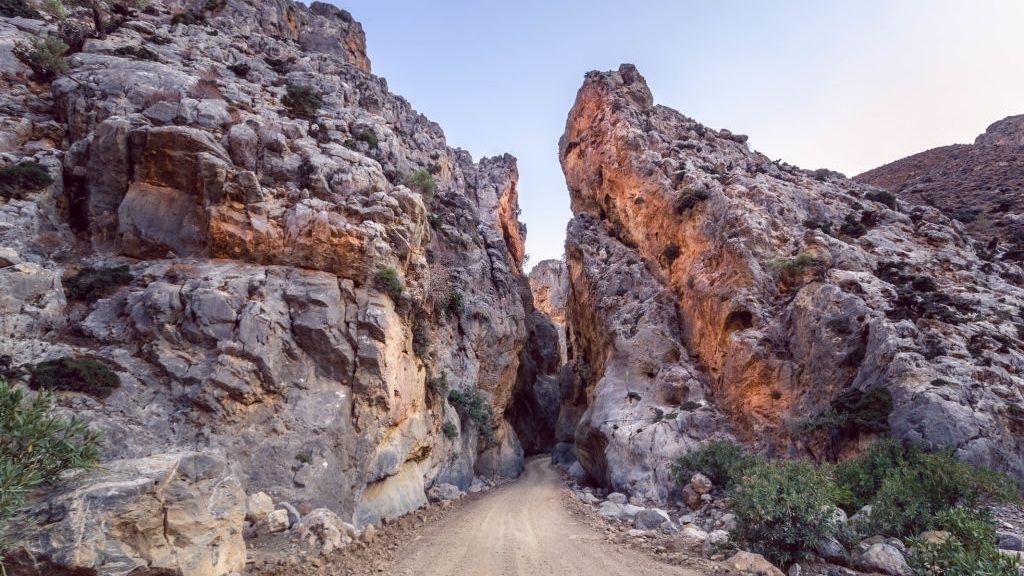
Asterousia Range – Mountains
The mountain range of Asterousia is the southernmost mountain range in Greece. It develops along the southern beaches of the prefecture of Heraklion, between the plain of Messara and the Libyan Sea.
The highest peak is Kofinas with an altitude of only 1231 m. Other peaks are Madara (1132 m.), Housakas (629 m.), Volakas, Sfentilia, Vigla, Spasmenos, Lakki, and Kalamaki. Although the mountain range does not offer particularly high altitudes, it is characterized both in the north and in the south by very steep slopes that create a dramatic change of altitude. To the south, the perpendicular slopes reach the sea, sometimes without even forming shores. On its eastern and western edges, however, the Asterousia mountain range has milder slopes.
Geomorphological, the Asterousia mountains are different from the other mountains of Crete. They are bare, rocky semi-mountainous areas covered with phrygana and other herbaceous plants that are resistant to heat and drought. However, even though the mountains of Asterousia look bare, they are full of life. These mountains are the kingdom of many predators and vultures. Among them, the endangered vulture Gypaetus Barbatus or “Kokkalas” (for his tendency to throw the bones of animals he has just devoured while in flight), the golden eagle Aquila Chrysaetos, the spotted eagle, the peregrine falcon, and the black peregrine falcon. This is also where the endemic snail Albinaria Terebra lives.

Asterousia took its name from the ancient local king Asterion, who according to mythology married Europa on the orders of her lover, Zeus. The mountains are not only important ecologically, but are also of archaeological importance, and for these reasons, they have been included in the Natura 2000 programme. In Kofinas, the highest peak, there was a Minoan summit sanctuary. Religious worship continues to this day in the church of the Holy Cross, while it is worth noting that here survives an ancient ritual of tree worship that concerns the three “Militses” of Kofinas. Their small red fruits are seen as a form of communion and are blessed on the feast of the Holy Cross (September 14). Also in Lentas (ancient Levin), there was a famous Asclepieion.
Perhaps the most characteristic elements of Asterousia are the caves and gorges. Gorges such as Agiofarago, Martsalo, Tripiti, find their way out to the Libyan Sea and exiting in impressive beaches. On the other hand, the caves of Asterousia, in the first years of Christianity, hosted many hermits and ascetics, in a landscape that is, after all, austere in itself. Asterousia is a favourite destination for climbing enthusiasts. There is a climbing track in Kapetaniana but also in Agiofarago. The monasteries of Asterousia are also important; the monastery of Odigitria, the monastery of Koudouma, the monastery of Apezanon and the monastery of Agios Nikitas near which there is a small palm forest with the endemic palm trees of Theophrastus are all found in the area. Regarding the settlements, the Kapetaniana west of Kofinas, with views over the sea towards Libya and the renovated traditional houses, and Ethia, southeast of Rotasi, with its characteristic Cretan architecture, are some of the most picturesque of Asterousia.